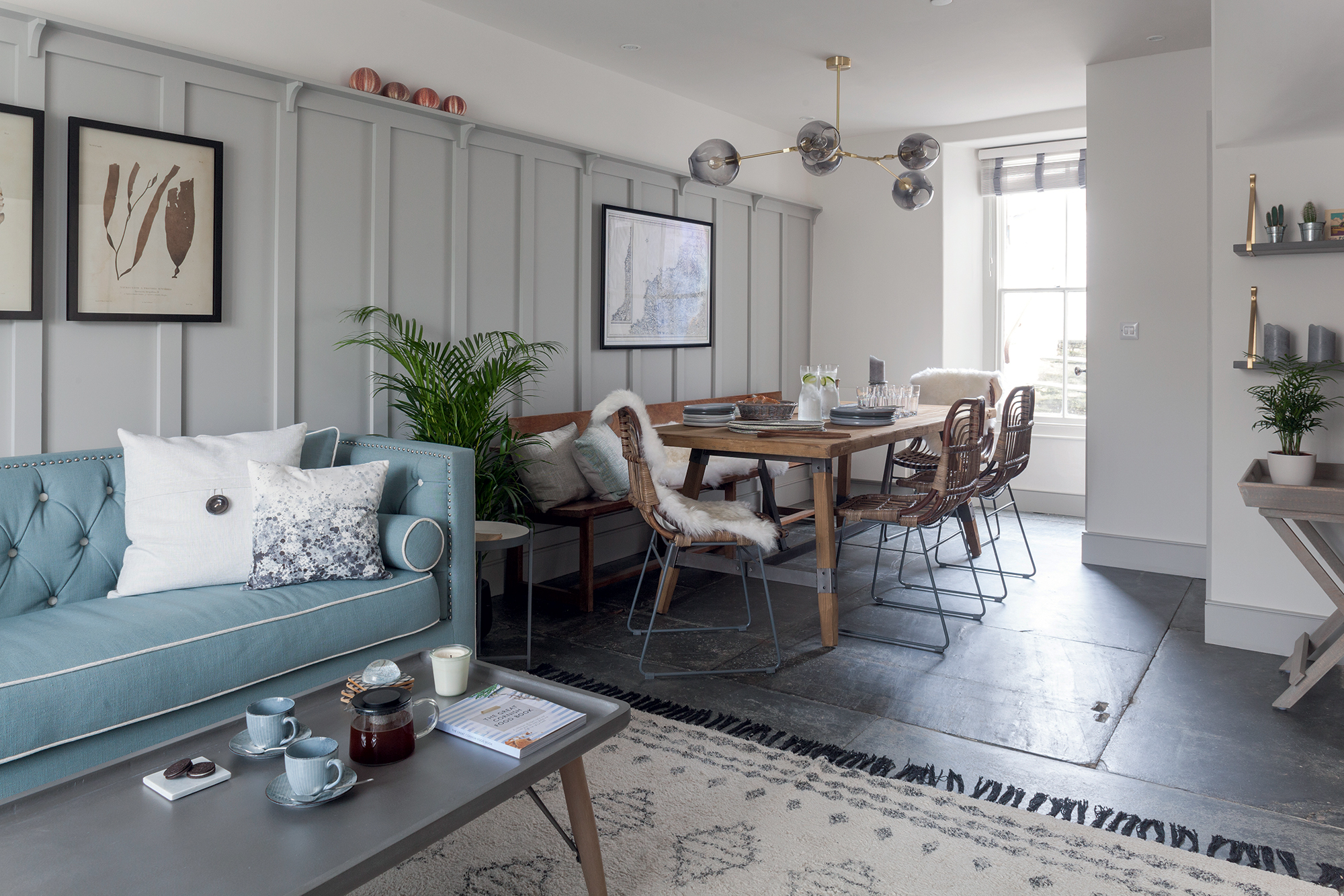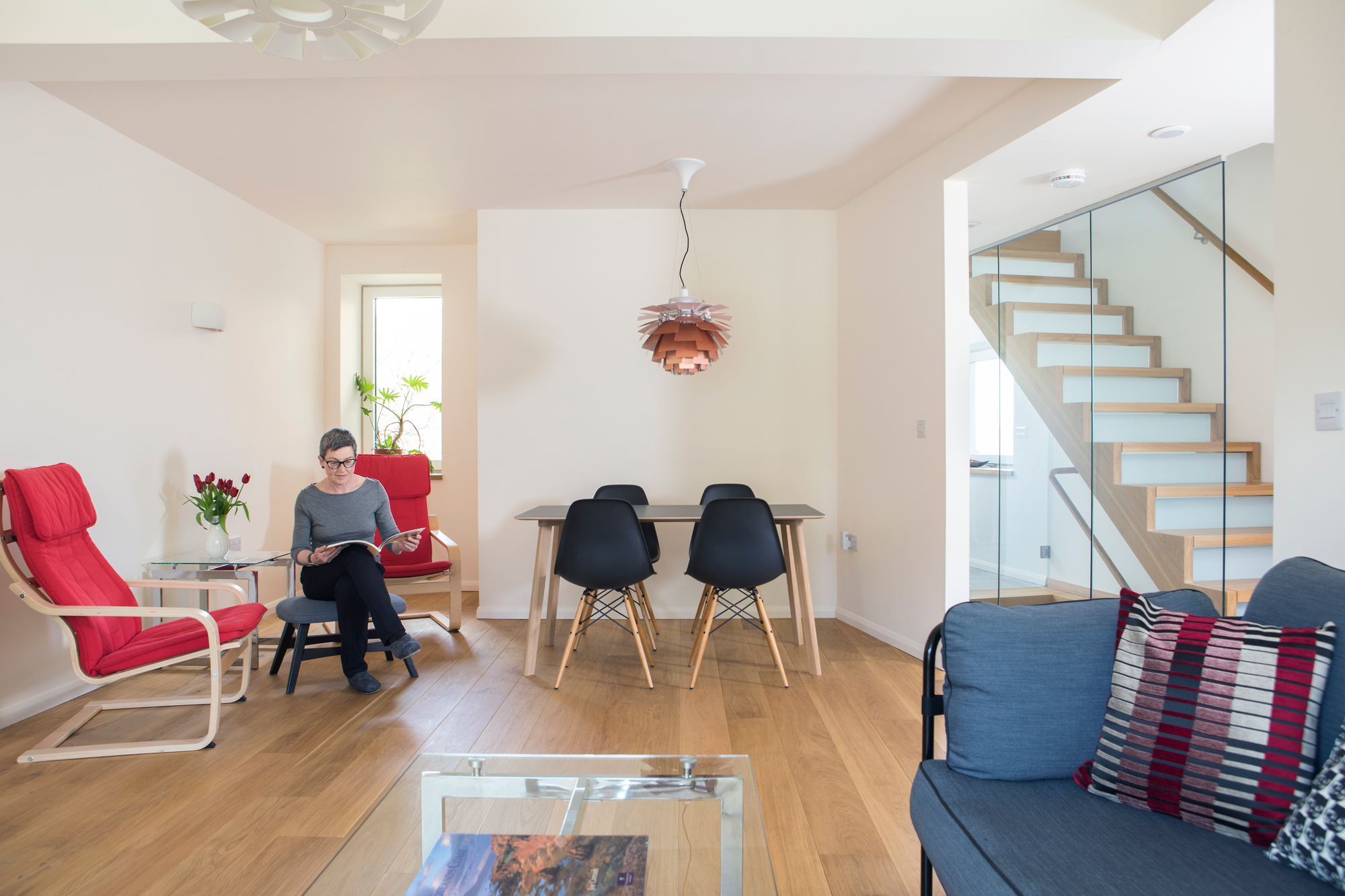Huge numbers of houses were built during the Victorian age, thanks to a combination of a population boom, a growing middle class and mass migration towards urban areas.
Homes of this period ranged from the very grand to small terraced properties for factory and railway workers. In between were large numbers of substantial townhouses – often terraced – to accommodate the middle classes in rapidly expanding cities.
Even the most modest of them incorporated decorative features and architectural detail that provide great opportunities for renovators.
Victorian homes: a potted history
Victoria reigned from 1837-1901. Over this long period, architectural styles ranged from late Georgian-inspired to the emergence of Edwardian/Queen Anne revival and the beginning of the Arts & Crafts movement.
However, the period is generally typified by a mixture of Gothic and Italianate design.
For examples of the Victorian style at its height, look to George Gilbert Scott’s Midland Hotel in London’s St Pancras, or the Palace of Westminster designed by Charles Barry and AW Pugin.
A very good example of a house in this style is Pugin’s own home, the Grange, recently renovated by The Landmark Trust – and there would be no better place to look for inspiration on how to carry out this kind of sensitive project.
Perhaps the best-known example of an Italianate home is Osborne House, owned by Victoria and Prince Albert. When it comes to design details, there was often a trickle-down effect from these very grand examples to mass housing.
Victorian terraced house layout ideas
If you are looking to renovate your tired Victorian terrace, check out these stunning projects. Architect Opinder Liddar shares heaps of design advice, from layout tips and building an extension to how to best convert your loft and basement. |
Typical features of Victorian homes
Externally, Victorian homes featured very extensive use of brick, often in a variety of colours and nearly always integrating decorative motifs such as string courses and mouldings.
This detail was frequently repeated through a large number of buildings in the same area, as houses were typically constructed by a single developer.
Roofs had a steep pitch and were generally covered in slate, transported by the new railways. They were often fitted with decorative terracotta ridge tiles, sometimes with finials, and ornately carved bargeboards.
Sliding sash windows predominated, with the size of the panes increasing through the period as glass-making technology developed. Bay windows were common, often incorporating elaborate Gothic or Italianate columns.
Internally, rooms had high ceilings with decorative plasterwork, including cornices and ceiling roses. Ornate plaster detailing also featured around arches and entrance porches.
Good joinery, crafted from very high quality softwood, included elements such as moulded picture rails, architraves, skirting boards and panelled doors.
Suspended timber floors were common, although hallways often had solid floors with a colourful design of encaustic tiles. Most rooms had a fireplace, often with decorative tiled surrounds and architectural flourishes.
Protecting period details
The characteristics I’ve set out above form the essence of Victorian houses and they represent much of the character and value inherent to these buildings, tied up in the decorative detail.
Your renovation project should aim to preserve, protect or uncover these details in order to get the most out of what they have to offer.
In the 20th century, this love of detail was superseded by a modernist desire to achieve clean lines and flat surfaces.
The likes of original panelled doors, turned balusters and mouldings were often simply boarded over, which means they can be easy to uncover. Bear in mind that these elements were always painted – stripped softwood joinery is a very modern fashion.
Plaster cornices, mouldings and ceiling roses will often have been damaged by later alterations or covered over. Older work was carried out in situ from scratch and repair is a job for a skilled craftsman.
Later, the use of prefabricated moulded elements became widespread. These are more straightforward to restore or replace if the appropriate pattern can be identified.
Sometimes all that is needed is careful stripping of modern paint layers and redecoration to pick out the most desirable features.
Victorian fireplaces were often boarded over when central heating arrived. Careful investigation behind modern fireplaces or boarded-up chimney breasts might reveal an ornate tiled surround, which would reinstate a fine focal point. Read my guide to restoring an old fireplace for more advice.
Closer look: Victorian cottage revamp
When Nicola O’Mara and John Merriman bought an end-of-terrace Victorian cottage back in 2015, they knew it would present them with a challenging project. “We weren’t daunted; we were excited about moving and changing our lifestyle,” says Nicola. Among the numerous jobs were rewiring, replumbing, repointing the stone walls with lime mortar, refurbishing the sash windows and repairing the original panelling in the sitting room. The couple took on these core works with aplomb, simultaneously making significant changes to the home’s layout to revamp it and attain a more modern lifestyle. These alterations included relocating the staircase and combining two bedrooms into a master suite. Features such as the original Delabole slate floors were reused, too, helping to ensure the pair achieved their goal of thoroughly updating the cottage while preserving its character. |
Maintaining breathability
Before undertaking any measures that will affect the performance of an old building, it is essential to understand how such structures work.
Houses built before about 1919 tend to be of traditional construction, so they were made with solid walls using soft, flexible and permeable materials. For Victorian properties that usually means soft red bricks bedded in lime mortar.
Unlike modern buildings, these houses don’t incorporate vapour barriers or damp-proof membranes.
They manage damp and moisture in a different way, through absorption and evaporation. This process is known as breathability. Any work you undertake will need to maintain the breathable performance of the building fabric.
Read more: How to treat condensation and other damp problems
The internal finishes will originally have been lime plaster. If this survives it should be retained with appropriate repair, where possible.
Much of it is likely to be lath and plaster, which is difficult and expensive to repair or replace if badly damaged. It is usually better to replace laths with breathable options (such as wood fibre board) as the base for new lime or clay plaster.
Avoid using plasterboard and modern plaster finishes – these will inhibit the breathable performance of the building and adversely affect the comfort and health of the occupants.
Victorian windows – repair or replace?
If original Victorian windows survive, retaining them will always be the right thing to do to protect the house’s character and value.
They tell a lot about the history and development of the building, and probably form part of the Victorian streetscape.
If your house is listed or in a conservation area, you’ll need formal consent to change any windows.
Fenestration that’s in poor condition can usually be repaired by a skilled joiner – and this is almost always better than replacement.
The timber used to make windows before the 20th century was of very high quality and is extremely durable.
It’s no longer possible to source timber of that quality, although the latest composite construction and advanced coatings can approach the same level of performance – for a price.
Older glass has irregularities and impurities that make it much more attractive to look at (and through) than modern versions. It is rarely possible to reuse glass if a window is remade.
If the frames have been lost, good quality timber replacements, modelled on the originals, are the best option. There’s usually a similar building nearby with authentic examples that can be copied.
Bear in mind, like-for-like replacement windows often can’t take double glazing. However, in all but the most sensitive situations, a degree of adaptation might be possible to allow for the incorporation of carefully considered double glazed units that fit with the character of the house.
The thermal performance of single-glazed fenestration can be improved by draught-proofing, secondary glazing, shutters and curtains. A sash window, upgraded this way, can outperform a modern double-glazed unit.
Energy efficiency in Victorian properties
The first priority in creating a warm and comfortable living environment must be to ensure that the property is well maintained and free from damp.
If a house is damp, it loses significantly more heat than a dry equivalent and presents considerable risk to the health of both building and occupants.
Ensure the gutters and downpipes are in good condition and working effectively. External pointing and brickwork should be inspected.
Lime pointing has often been replaced with cement, which could interfere with the building’s breathability and tends to fail prematurely. Defective pointing should be redone using lime mortar.
Next on the list is airtightness. In a Victorian house, more heat is lost through draughts than poor insulation; and draughts have a disproportionate effect on how cold we feel.
Period property awarded Passivhaus status
Long-overdue repairs turned into an energy-efficient redesign for Glenys and Paul Ferguson’s Victorian end-of-terrace house – resulting in one of the first period properties in the UK to be awarded Passivhaus status. |
Windows are very important here, along with doors and even elements such as keyholes and letter flaps.
Improvements in airtightness must go hand in hand with ensuring good ventilation, particularly in kitchens and bathrooms, to avoid excessive build up of water vapour, which will cause damp, condensation and mould.
Once you’ve tackled draughts, it’s time to consider improving insulation. A very large proportion of heat lost from a house is through the roof, so focus your attention here.
Fortunately, improving performance is very easy to do by simply laying insulation material on the floor of the loft. However, if it is not done carefully, problems can result.
The treatment must stop short of the eaves to avoid blocking cross-ventilation in the roofspace.
The choice of insulation material is important. Natural, hygroscopic options are able to buffer moisture and still maintain their insulation value.
Synthetic insulation cannot do this and tends to promote condensation in a cold roofspace, so it represents a threat to the roof timbers. Appropriate natural products include sheepswool, hemp, wood fibre and sisal.
Pay attention to old floors
Insulating floors can have a significant impact on comfort because the floor is the element of the building with which you are in most contact.
Victorian suspended floors were actually designed to allow draughts because they thought this was good for health!
Read more: Renovating old floors
You should be able to lift the existing floorboards without causing damage. It will then be fairly straightforward to drape a membrane into position and fill the space between the joists with insulation, before replacing the boards.
Use a breathable material to avoid damp and decay to the floor joists.
Loose-fill cellulose insulation works well because it easily fills the voids without any gaps. The ventilation space below the joists should be left unobstructed.
You can now replace the original boards – or reinstate them with good-quality new versions, if these have been lost over time.
The post How to Renovate a Victorian House appeared first on Build It.
Article reference How to Renovate a Victorian House



No comments:
Post a Comment